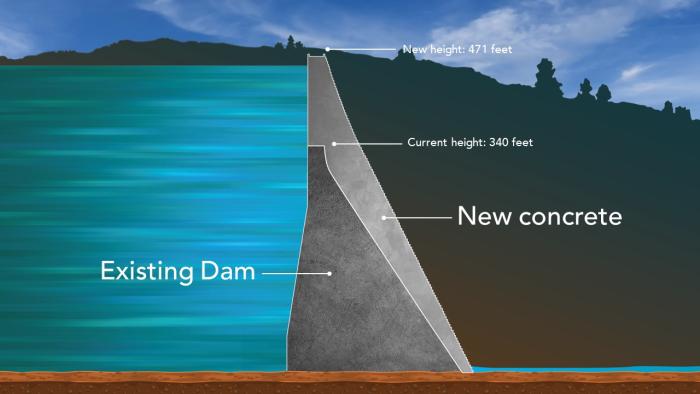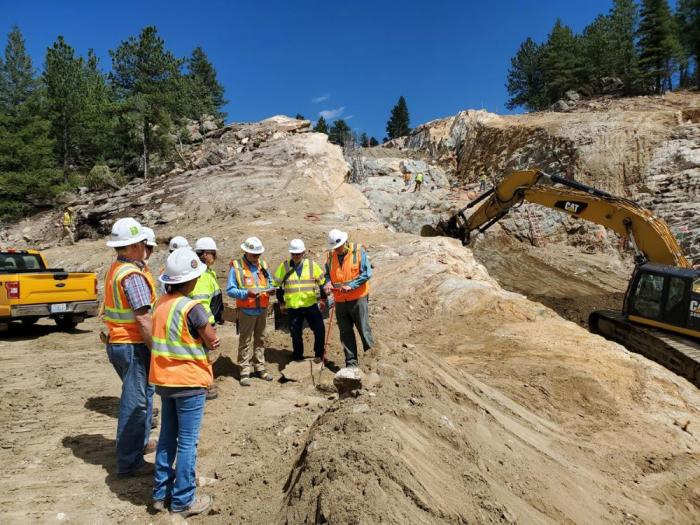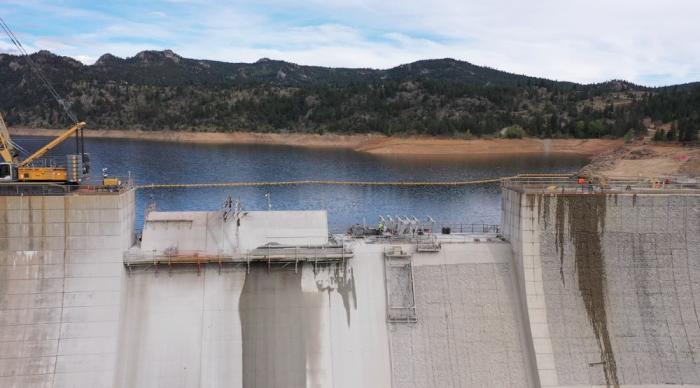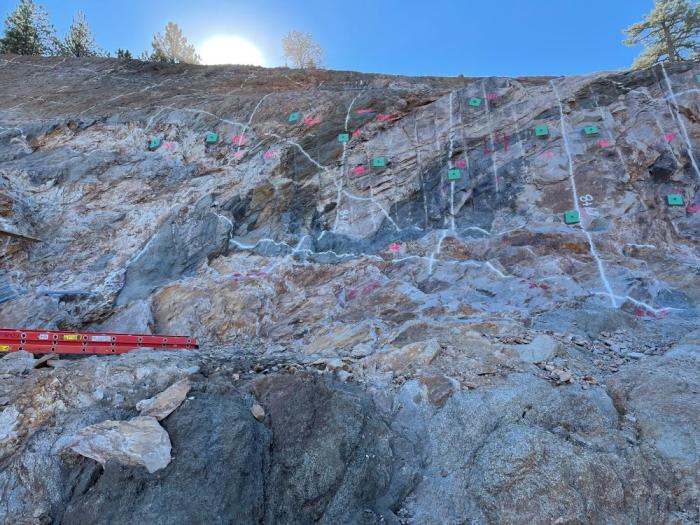Safety gets top billing for Gross Dam project
Denver Water has two priorities when it comes to the construction of the Gross Reservoir Expansion Project.
One: Build a dam that will last hundreds, if not thousands, of years.
And two: Build it as safely as possible.
“We’re not only analyzing long term, but we’re analyzing the short-term construction risk just as heavily,” said Jeff Martin, program manager for Denver Water’s Gross Reservoir Expansion Project. “We’re making sure that the dam is just as safe while we’re building it as it will be once the dam is complete.”
The Gross Reservoir Expansion Project, scheduled for completion in 2027, will raise the height of the existing Gross Dam by 131 feet to nearly triple the storage capacity of the reservoir. The additional water stored in the expanded reservoir will add balance and resiliency to Denver Water’s collection system, which serves 1.5 million people in the Denver-metro area. Once the expansion project is complete, Gross will be the tallest dam in Colorado.
Third-party dam experts oversee design and construction
In 1928, the St. Francis Dam broke, killing hundreds of people in Los Angeles. Often called one of the worst civil engineering failures of the 20th century, experts placed much of the blame on inadequate oversight.
“Infrastructure that has such grave consequences should always be independently reviewed,” Martin said.
Lessons learned from the St. Francis Dam were quickly implemented during construction of the Hoover Dam and continue to be for all federally regulated dams in the country — including Gross.
The Federal Energy Regulatory Commission’s Division of Dam Safety and Inspections oversees Denver Water’s dam design, safety and construction activities, and spent more than four years reviewing and approving detailed design drawings and specifications developed by Denver Water.
FERC and Colorado’s Office of the State Engineer also required an independent board of consultants to be part of the design process and review major milestones and aspects of the project.
“One of the reasons the final design is the safest end result that we can achieve is because all of the analysis we’ve done and all of the review that has been done by FERC, the state engineer’s office and the independent board of consultants,” Martin said.
Safety measures mitigate construction risks
Concrete dams need sturdy foundations to withstand the forces of the reservoir behind it.
During design, engineers study slope stability and its capacity to stay in place during excavation. Engineers also study potential movable blocks along the mountainside, in which faults along the rock wall could cause giant, building-sized blocks to fall off the side of the mountain once the reservoir is loaded on it.
“We spend a lot of time brainstorming potential problems, but we also focus on past failures,” Martin said. “A lot of dam engineering advances forward through failures that have happened in the past.”
In this case, engineers studied the Malpasset Dam failure in France, which collapsed because of movable blocks, by conducting careful analysis on Gross Dam’s geological conditions.
Gross Dam designers spent years developing construction sequencing, considering risks and hazards, and building temporary safety measures for the modified foundation — which includes installing more than 1,600 rock bolts along the mountainside — to prevent geologic forces from damaging the infrastructure.
“We designed it to be safe — that was our No. 1 priority,” said Felipe Garcia, resident engineer with Stantec, the contractor that designed the expansion project. “Inherently speaking, a concrete arch dam on a hard rock foundation is very, very stable. What we’re doing is very safe.”
But like any construction project, the safest condition is completion.
“The permanent solution is the new dam, which then puts load back on the foundation and meets the design intent that took over four years to develop,” Martin said. “The dam was designed for the foundation that was present on this site. They go together.”
Larger spillway built for powerful floods
When Gross Reservoir was built in the 1950s, the spillway was undersized for a record-breaking flood. One of the many benefits of this project is a new spillway that will withstand a major flood.
But to build a new spillway, crews first had to demolish the original. Denver Water is protecting the dam from overtopping by keeping water levels at a maximum of two-thirds of full capacity, allowing the reservoir to contain potential floodwaters.
“We can’t live in this condition forever,” Martin said. “We need to have a proper spillway in place.”
These temporary risks have been analyzed and modeled for years, and crews have entire procedures in place for potential flooding. Stream gauges alert water planners of heavy flows, Martin said, and underwater divers checked upstream gates to make sure they could be relied on in a flood.
“Instead of draining the dam, which would cause environmental issues, we are managing the reservoir behind it,” Martin said. “We’re working with this risk, but we’re mitigating it because we’ve done so much hydraulic modeling, and we’re assessing the project in real time.”
On-site monitors and regular inspections ensure safety
Beyond third-party design oversight, Denver Water has continuous monitoring and regular on-site third-party inspections to ensure the design matches field work, and that the design is correct.
Three full-time geologists monitor the foundation, mapping every single crack or discontinuity in the rock. Instrumentation monitors the hillside to measure for geologic movement, and equipment on top and within the dam monitor its health. Internal audits and monthly inspections make sure construction activities aren’t damaging the structure.
“This infrastructure is critical,” Martin said. “The best option is to build it right so it will last for many generations to come.”





